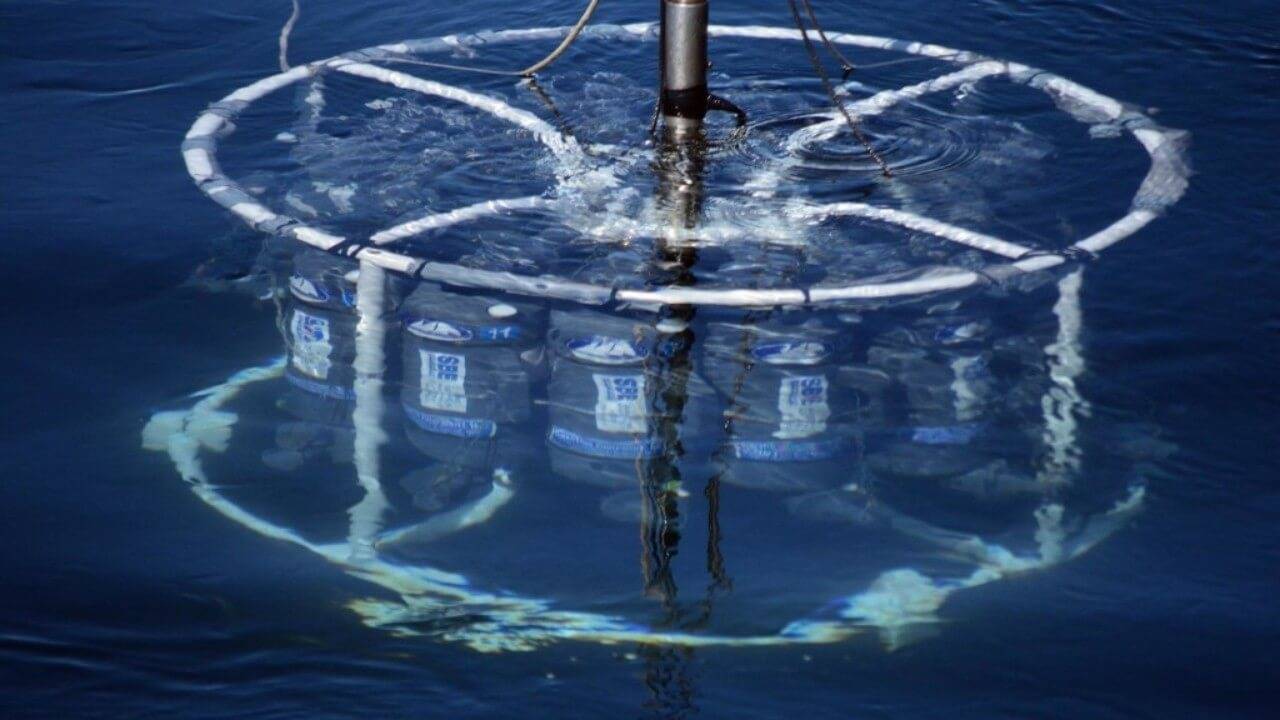About Water Conductivity:
Conductivity plays a critical role in assessing water quality. As salinity and temperature rise, conductivity levels also increase, potentially compromising water quality. Elevated conductivity indicates a greater presence of impurities, including dissolved substances, chemicals, and minerals, which can negatively impact water quality.
Importance of Water Conductivity:
Water conductivity is crucial for several reasons, making it a fundamental parameter in assessing water quality. It is widely used in determining the health of water bodies, and here’s why:
- Indicator of Water Quality: Conductivity measurements provide valuable insights into the overall quality of water. By assessing conductivity levels, it becomes possible to gauge the presence of dissolved solids and other impurities, which directly impact water safety and health.
- Calculation of Total Dissolved Solids (TDS): Conductivity measurements are commonly used to estimate the concentration of total dissolved solids (TDS) in water. TDS refers to the combined content of inorganic and organic substances present in water, such as minerals, salts, and metals. Monitoring TDS levels helps identify potential contaminants and assess water suitability for various purposes, including drinking, agriculture, and industrial use.
- Evaluation of Salinity: Conductivity and salinity are closely linked, with conductivity serving as a reliable indicator of salinity levels in water. Salinity, the concentration of dissolved salts, affects water quality and ecosystem health. High salinity can lead to reduced oxygen levels, posing challenges for aquatic life and ecosystem balance. Regular conductivity measurements help monitor salinity levels and mitigate potential impacts on aquatic habitats.
- Monitoring Environmental Changes: Conductivity measurements enable the detection of environmental changes that may affect water quality. Events such as pollution, evaporation, and natural disasters like flooding can alter conductivity levels significantly. Monitoring conductivity over time helps identify deviations from baseline values, signaling potential threats to water quality and prompting timely intervention measures.
- Correlation with Ion Composition and Temperature: Water conductivity is influenced by factors such as the types and concentrations of ions present in water and its temperature. Understanding these relationships allows for a more comprehensive assessment of water quality and ecosystem health. Changes in ion composition and temperature can affect conductivity readings, providing valuable information about environmental conditions and potential stressors on aquatic systems.
Issue and Impact of Water Conductivity on Human Life:
Issues with conductivity in water arise due to its role as a key indicator of water quality, reflecting the presence of dissolved ions. While conductivity itself isn’t directly harmful, it signals potential concerns and poses challenges in various aspects of water management. Here’s an overview:
- Water Contamination Detection: High conductivity often signifies elevated levels of dissolved solids, indicating pollution from sources like industrial discharge, agricultural runoff, or natural geological processes. Monitoring conductivity helps identify contamination and assess overall water quality.
- Impact on Aquatic Life: Excessive conductivity can disrupt aquatic ecosystems by altering the osmotic balance and ion concentrations in water bodies. This disruption affects aquatic organisms’ health, leading to reduced biodiversity and compromised ecosystem resilience.
- Infrastructure Damage: High conductivity water accelerates corrosion of metal infrastructure such as pipelines and pumps, leading to leaks, service disruptions, and costly repairs. Corrosion-related issues are particularly prevalent in regions with high levels of dissolved salts.
- Treatment Challenges: Managing conductivity during water treatment can be challenging, especially in areas with elevated levels of dissolved ions. High conductivity can interfere with treatment processes, reducing efficiency and increasing operational costs.
- Drinking Water Quality: While conductivity itself isn’t harmful, it’s used as an indicator of water quality and correlates with the presence of dissolved solids. Excessive levels of dissolved solids can affect water taste, odor, and clarity, necessitating treatment to meet drinking water standards.
- Agricultural Impact: High conductivity water used for irrigation can lead to soil salinization, reducing soil fertility and crop productivity. Managing conductivity in irrigation water is crucial for sustaining agricultural practices and ensuring long-term soil health.
Types of Water Conductivity:
There are primarily two types of water conductivity:
- Specific Conductance: Specific conductance, also known as specific conductivity or electrical conductivity, measures the ability of water to conduct an electrical current. It is expressed in units of Siemens per meter (S/m) or microsiemens per centimeter (μS/cm). Specific conductance accounts for the conductivity of water at a specific temperature and is commonly used in water quality assessments and environmental monitoring.
- Total Dissolved Solids (TDS): Total dissolved solids (TDS) refer to the total concentration of dissolved substances in water, including salts, minerals, metals, and organic compounds. TDS is typically measured in milligrams per liter (mg/L) or parts per million (ppm). While not a direct measurement of conductivity, TDS levels are often correlated with water conductivity, with higher TDS values indicating greater conductivity due to the presence of dissolved ions.
Both specific conductance and TDS measurements provide valuable insights into water quality, helping to assess the presence of dissolved contaminants and potential impacts on aquatic ecosystems and human health.
Measuring Conductivity is Crucial for Determining Water Quality
- Aquaculture Systems: In aquaculture, conductivity measurement is vital for assessing salinity levels and electrical conductivity (EC) ranges. Different aquatic organisms have specific tolerance levels, making conductivity monitoring essential for fish survival in fisheries and aquariums. By regularly measuring conductivity, aquarists can detect changes in water quality and adjust conditions to maintain a stable environment.
- Wastewater Treatment: Conductivity measurements in wastewater treatment facilities help identify variations in water quality. This information guides the addition of chemicals required for sterilization and aids in controlling conductivity during the activated sludge process, ensuring effective treatment and environmental protection.
- Laboratory Environments: Conductivity is utilized in laboratories to accurately determine water composition during experiments. Precise conductivity measurements are particularly critical in pharmaceutical testing to ensure reliable results and product quality.
- Food and Beverage Industry: Conductivity testing is integral to quality control in the food and beverage industry. By monitoring water conductivity, manufacturers can assess the quality of end products, optimize production processes, and mitigate health risks associated with contaminated water.
- Swimming Pool Maintenance: In residential settings with swimming pools, EC probes are employed to measure total dissolved salts/solids (TDS) levels in the water. Monitoring TDS levels is essential for maintaining water quality and preventing issues such as over-saturation, which can lead to water clarity and safety concerns.
Conductivity measurement is not only essential for commercial industries but also for maintaining water quality in recreational and domestic settings. Whether in aquaculture, wastewater treatment, laboratories, or everyday activities like swimming pool maintenance, accurate conductivity assessment plays a vital role in ensuring water safety and environmental sustainability.
In conclusion, water conductivity serves as a critical parameter for assessing water quality and understanding its impact on human health. While conductivity itself may not be directly harmful, it acts as a key indicator of potential contaminants and impurities in water sources. Elevated conductivity levels often correlate with increased concentrations of dissolved solids, chemicals, and minerals, posing risks to both environmental ecosystems and human populations.
Regular monitoring of water conductivity is essential for detecting changes in water quality, identifying sources of contamination, and implementing appropriate remediation measures. By understanding the relationship between conductivity and health, stakeholders can take proactive steps to safeguard water resources, mitigate risks to public health, and ensure access to clean and safe drinking water for all.
I am Komal Hatwaani, aims to provide readers with informative and engaging content that covers everything from technology and business to entertainment and lifestyle. This website dedicated to delivering high-quality content that informs, entertains, and inspires our readers.
Join us on our journey as we continue to explore the ever-evolving landscape of news and information, providing you with valuable insights and perspectives that enrich your digital experience.











